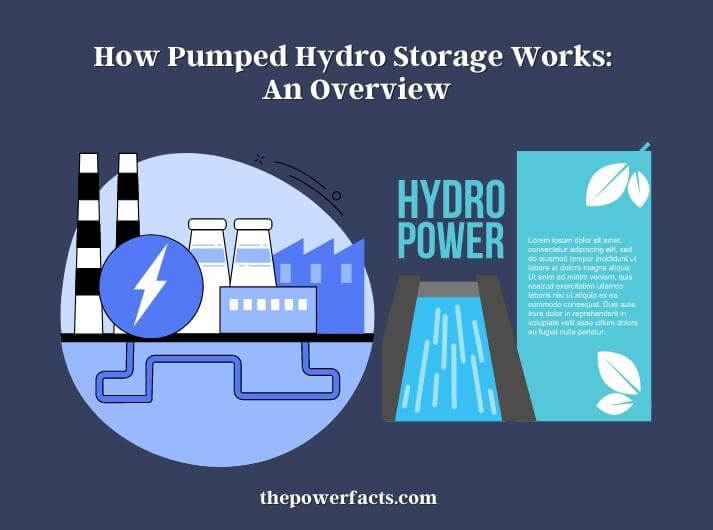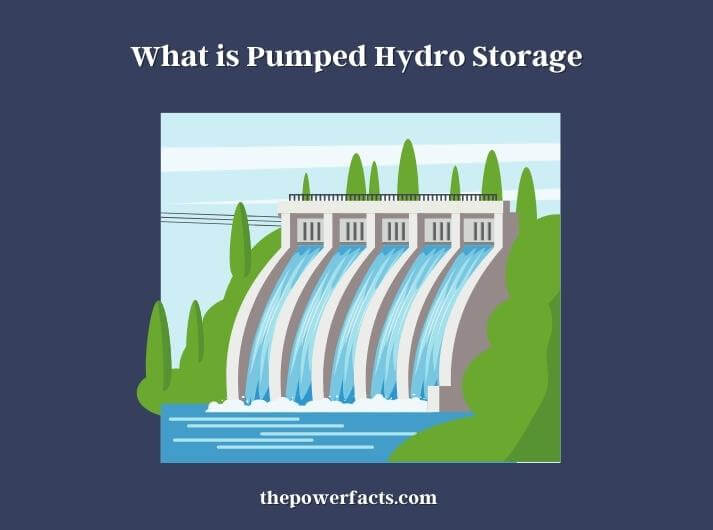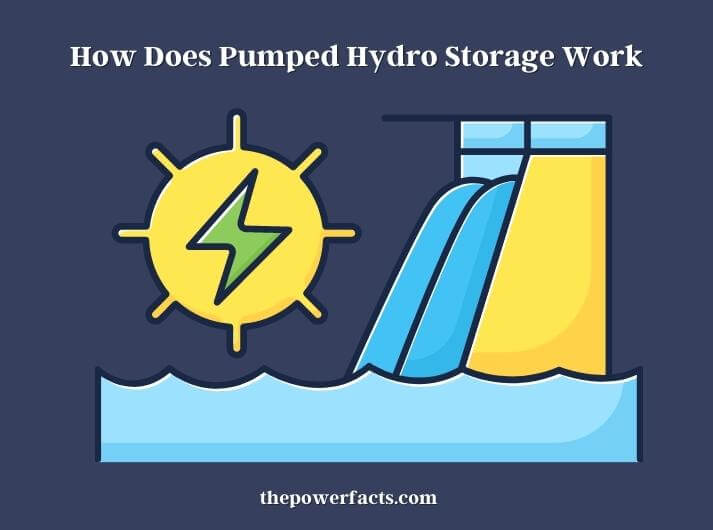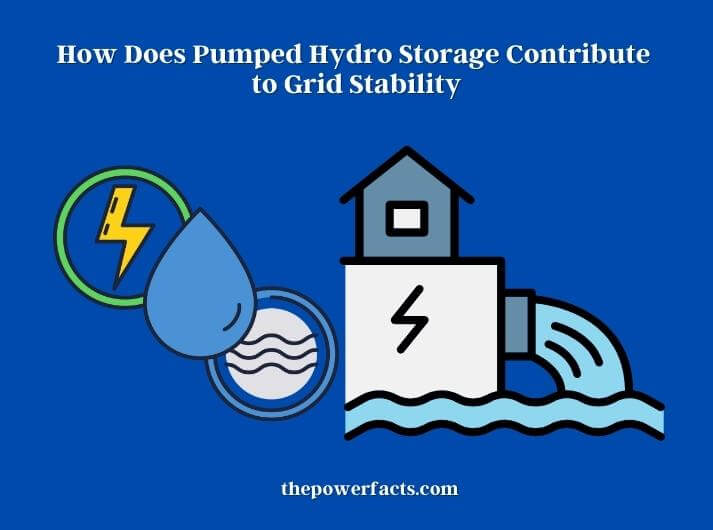The world’s energy landscape is rapidly changing as the demand for renewable energy sources increases. While renewable energy sources such as wind and solar power have made great strides in recent years, they face a significant challenge: energy storage. Unlike traditional fossil fuel power plants, renewable energy sources are dependent on weather conditions, which means they can’t always generate power when it’s needed. This has led to an increasing need for energy storage technologies that can store excess energy generated during low-demand hours and release it during peak-demand hours.

Pumped hydro storage is one such technology that has been in use for over a century. It involves using excess energy to pump water from a lower reservoir to a higher one and then releasing it to generate electricity during peak demand hours. Pumped hydro storage is not only efficient and reliable but also scalable, making it an ideal technology for renewable energy storage. However, like any technology, it has its challenges, including finding suitable locations for the reservoirs, the cost of construction and maintenance, and the potential environmental impact.
What is Pumped Hydro Storage?
Pumped hydro storage is a type of energy storage technology that involves two reservoirs, one at a higher elevation and one at a lower elevation, and a pump-turbine system. During periods of low energy demand and excess energy generation, water is pumped from the lower reservoir to the upper reservoir, where it is stored.
When the energy demand is high, the water is released from the upper reservoir and flows through the turbine, generating electricity. The process can be repeated as needed, and the system can provide backup power during emergencies. Pumped hydro storage is one of the most efficient and reliable energy storage technologies available, with a round-trip efficiency of up to 80%. It is also a scalable technology that can be used for storing excess energy generated from renewable energy sources such as wind and solar power.

How Does Pumped Hydro Storage Work?
Pumped hydro storage works by using excess energy to pump water from a lower reservoir to a higher one, where it is stored as potential energy. Then, when the energy is needed, the water is released from the upper reservoir and flows through a turbine, generating electricity. The basic process can be broken down into four main steps:
Pumping water to the upper reservoir: During periods of low energy demand and excess energy generation, the water is pumped from the lower reservoir to the upper reservoir using pumps that require electricity.
Storing water in the upper reservoir: The water is stored in the upper reservoir until it is needed to generate electricity. The amount of water stored depends on the capacity of the reservoir and the amount of excess energy available.
Generating electricity: When the energy demand is high, the water is released from the upper reservoir and flows through a turbine, which generates electricity.
Returning water to the lower reservoir: Once the water has passed through the turbine, it is returned to the lower reservoir, where it can be pumped back up to the upper reservoir and the cycle can be repeated.

The process is continuous and can be repeated as needed to store excess energy during periods of low demand and generate electricity during periods of high demand. Pumped hydro storage systems can be very large, with some having capacities of over 10,000 megawatts, and can provide backup power during emergencies.
Advantages of Pumped Hydro Storage
Pumped hydro storage has several advantages that make it an attractive option for energy storage, including:
High Efficiency
Pumped hydro storage is one of the most efficient forms of energy storage available, with a round-trip efficiency of up to 80%. This means that for every unit of energy put into the system, up to 80% of that energy can be retrieved as electricity.
Scalability
Pumped hydro storage systems can be built to suit various energy storage needs. They can be built to accommodate small-scale applications for individual homes or businesses, as well as large-scale applications for entire communities.
Long Lifespan
Pumped hydro storage systems are built to last for decades, with an expected lifespan of over 50 years. This makes them a reliable and durable energy storage option.
Flexibility
Pumped hydro storage systems can respond quickly to changes in energy demand, making them a highly flexible energy storage solution. They can provide backup power during emergencies, stabilize the grid during periods of high demand, and store excess energy generated from renewable energy sources.
Environmental Benefits
Pumped hydro storage systems do not emit greenhouse gases and do not require any fuel. They are also highly recyclable, with most of the components being made of steel and concrete that can be recycled at the end of their useful life.
Its ability to respond quickly to changes in energy demand makes it a valuable asset for integrating renewable energy sources into the grid and reducing reliance on fossil fuels.
Disadvantages of Pumped Hydro Storage
While pumped hydro storage has many advantages, it also has some potential disadvantages, including:
High Capital Costs
Pumped hydro storage systems require a significant initial investment to build, including the cost of building the two reservoirs and the pump-turbine system. This can make it a more expensive option than other forms of energy storage.
Limited Availability of Suitable Sites
Pumped hydro storage systems require specific geological conditions, including a large difference in elevation between the two reservoirs and suitable geology for building the reservoirs. As a result, suitable sites for pumped hydro storage systems may be limited.
Environmental Impact
Building a pumped hydro storage system can have environmental impacts, including the need to build large dams and reservoirs, which can affect local ecosystems and wildlife habitats. The construction process may also require significant amounts of land, water, and other resources.
Water Management
Pumped hydro storage systems require large amounts of water to operate, and the water must be managed carefully to ensure that it is available when needed. In regions with water scarcity or competing demands for water resources, pumped hydro storage may not be a viable option.
Energy Losses
While pumped hydro storage is highly efficient, some energy is lost during the pumping and generation process. This means that not all of the energy put into the system can be retrieved as electricity, which can reduce the overall efficiency of the system.
Examples of Pumped Hydro Storage Projects
There are several notable examples of pumped hydro storage projects around the world, including:
Dinorwig Power Station, Wales
Dinorwig Power Station is a pumped hydro storage facility located in Wales, UK. It has a capacity of 1,728 MW and can generate electricity for up to five hours at maximum output. It was completed in 1984 and has since played an important role in the UK’s electricity grid.
Bath County Pumped Storage Station, Virginia, USA
Bath County Pumped Storage Station is the largest pumped hydro storage facility in the world, with a capacity of 3,003 MW. It is located in Virginia, USA, and consists of two reservoirs and four pump-turbine generators. It was completed in 1985 and has since provided backup power during periods of high demand in the US grid.
Goldisthal Pumped Storage Station, Germany
Goldisthal Pumped Storage Station is a pumped hydro storage facility located in Germany. It has a capacity of 1,060 MW and can generate electricity for up to eight hours at maximum output. It was completed in 2003 and is one of the largest pumped hydro storage facilities in Europe.
Okutataragi Pumped Storage Power Station, Japan
Okutataragi Pumped Storage Power Station is a pumped hydro storage facility located in Japan. It has a capacity of 1,200 MW and can generate electricity for up to eight hours at maximum output. It was completed in 1999 and has played an important role in stabilizing Japan’s electricity grid.
Snowy Mountains Hydroelectric Scheme, Australia
The Snowy Mountains Hydroelectric Scheme is a series of pumped hydro storage facilities located in Australia. It has a capacity of 4,100 MW and can generate electricity for up to one week at maximum output. It was completed in 1974 and has since played an important role in Australia’s electricity grid, particularly during periods of high demand and drought.
These examples demonstrate the versatility and scalability of pumped hydro storage, which can be used to meet various energy storage needs around the world.
Challenges of Pumped Hydro Storage
Pumped hydro storage requires two reservoirs, one at a higher elevation and one at a lower elevation. Finding suitable locations for the reservoirs can be a challenge.
Pumped hydro storage can be expensive to build and maintain, especially if the reservoirs need to be built from scratch.
Pumped hydro storage can have an impact on the environment, especially if the reservoirs are located in sensitive ecosystems. The construction of the reservoirs can also displace wildlife and disrupt habitats.
How Does Pumped Hydro Storage Contribute to Grid Stability?
Pumped hydro storage can contribute to grid stability in several ways:

Load Balancing
Pumped hydro storage can help balance the supply and demand of electricity on the grid. During periods of low demand, excess electricity can be used to pump water from the lower reservoir to the upper reservoir. During periods of high demand, the stored water can be released to generate electricity and meet the increased demand.
Frequency Regulation
Pumped hydro storage can also help regulate the frequency of the electricity on the grid. When there is excess electricity on the grid, the pump turbines can be used to pump water from the lower reservoir to the upper reservoir, which increases the frequency. When there is a shortage of electricity on the grid, the stored water can be released to generate electricity, which decreases the frequency.
Reserve Capacity
Pumped hydro storage can also provide reserve capacity to the grid. During periods of high demand or unexpected disruptions, the stored water can be released to generate electricity and provide additional power to the grid. This helps ensure that the grid can meet demand and maintain stability.
Note
Pumped hydro storage can help stabilize the grid by providing a flexible and reliable source of energy storage. It can help balance supply and demand, regulate frequency, and provide reserve capacity, all of which are critical for ensuring the stability and reliability of the grid.
Is Pumped Hydro Storage Scalable to Meet Future Energy Demands?
Yes, pumped hydro storage is scalable to meet future energy demands. The technology can be used at a range of scales, from small systems that can provide backup power to individual homes, to large systems that can provide power to entire cities or regions.
Pumped hydro storage has the potential to play an important role in integrating renewable energy sources into the grid. Renewables such as wind and solar can be intermittent, which can create challenges for grid stability. However, by using pumped hydro storage to store excess energy when it is available and release it when it is needed, renewable energy sources can become more reliable and predictable.
As the demand for electricity continues to grow, the need for energy storage technologies like pumped hydro storage is likely to increase. This means that there will be an increasing demand for pumped hydro storage systems, which could lead to the development of new and more advanced technologies that are even more scalable and efficient.
Pumped hydro storage is a flexible and scalable technology that has the potential to play an important role in meeting future energy demands, particularly as the world continues to shift towards renewable energy sources.
Final Words
Pumped hydro storage is a powerful and flexible energy storage technology that has the potential to play a critical role in meeting the energy demands of the future. The technology is well-established and proven, with many successful projects around the world, and it has a range of advantages over other energy storage technologies.
Pumped hydro storage can help balance the supply and demand of electricity on the grid, regulate frequency, provide reserve capacity, and integrate renewable energy sources into the grid. These capabilities make pumped hydro storage a reliable and flexible technology that can help ensure the stability and reliability of the grid, even as the demand for energy continues to grow.
As the world continues to shift towards renewable energy sources and the demand for electricity continues to increase, the need for energy storage technologies like pumped hydro storage is likely to become even more important.